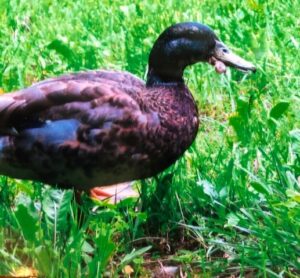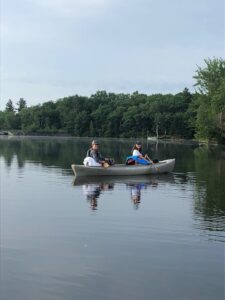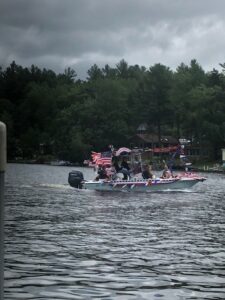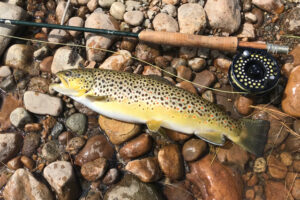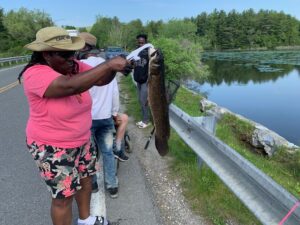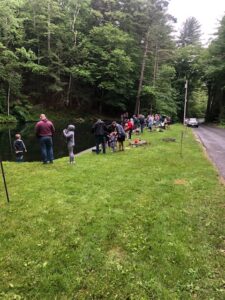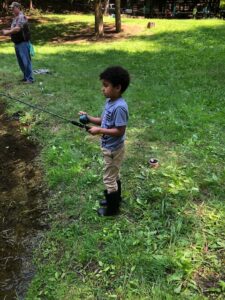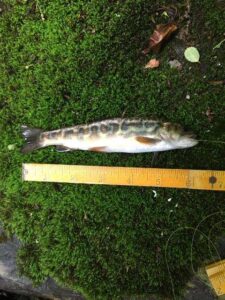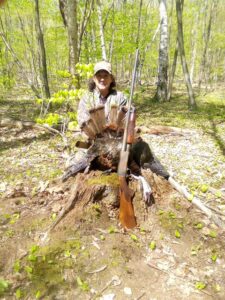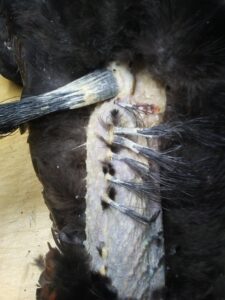By now, readers are probably aware of the MassWildlife Advisory to report dead birds and remove feeders. (Berkshire Eagle, July 17-18, 2021, State warns of mysterious disease killing birds written by Berkshire Eagle reporter Jimmy Nesbitt) . If you aren’t, the advisory reported the following:
“In late May, wildlife managers in Washington D.C., Maryland, Virginia, West Virginia, and Kentucky began receiving reports of sick and dying birds with eye swelling and crusty discharge, as well as neurological signs. More recently, additional reports have been received from Delaware, New Jersey, Pennsylvania, Ohio, and Indiana. While the majority of affected birds are reported to be fledgling common grackles, blue jays, European starlings, and American robins, other species of songbirds have been reported as well. No definitive cause(s) of illness or death have been determined at this time.
While there is always an increase in reports of dead birds at this time of year due to natural high mortality rates of young birds, MassWildlife is encouraging the public to report any observations of sick or dead birds (with unknown cause of mortality) as a precaution to help track this widespread mortality event. However, the mystery disease is not known to be in any of the New England states at this time. It is not necessary to report dead birds where strong evidence links the mortality to collision with glass or vehicles or predation by cats. Please email reports to mass.wildlife@mass.gov and include your location, number and species of birds, symptoms observed, and any photos.
As another cautionary measure, MassWildlife is also recommending the public to stop using bird feeders and birdbaths including hummingbird feeders. Birds congregating at bird feeders and bird baths can transmit diseases to one another. MassWildlife, as well as other affected states, recommend taking the following precautions:
- Cease feeding birds until this wildlife morbidity/mortality event subsides.
- Clean feeders and bird baths with a 10% bleach solution (one part bleach mixed with nine parts water), rinse with water, and allow to air-dry.
- Avoid handling birds unless necessary. If you do handle them, wear disposable gloves and wash hands afterwards.
- If picking up a dead bird, place an inverted plastic bag over your hand to avoid direct contact with the bird. To dispose of dead birds, place them in a plastic bag, seal, and discard with household trash or alternatively bury them deeply.
- Keep pets (including pet birds) away from sick or dead wild birds as a standard precaution.
At this time of year, birds are able to find plenty of natural foods on the landscape without needing bird seed. MassWildlife advises that seed from bird feeders can draw the unwanted attention of squirrels, chipmunks, turkeys, mice, rats, and even black bears. Wild animals that become habituated to human-associated foods like bird seed can become a nuisance, spread disease, and cause problems.
Gobi’s budget amendment reimburses lost funds to MassWildlife
State Senator Anne Gobi (D-Spencer), co-chair of the Massachusetts Legislative Sportsmen’s Caucus and past chair of the Joint Committee on Environment, Natural Resources and Agriculture, fought successfully for the inclusion of an amendment to the FY22 state budget aimed at addressing lost revenue that the state is failing to reimburse to the Massachusetts Division of Fish and Wildlife. The bipartisan amendment targets the nearly $1 million/year the agency forfeits each year by providing free hunting and fishing licenses to residents 70 and over that is not currently being reimbursed by the state and ensures that these funds are appropriated annually from the General Fund. Governor Baker has subsequently signed the budget and the amendment stayed in.
Gobi had this to say on the amendment’s acceptance in the conference committee report, “Offering free licenses to those over a certain age is the right thing to do, especially now, when we want people to enjoy the outdoors. Our sportsmen and women play a critical role in conservation, and the fees from licenses make sure that land is set aside for all types of outdoor recreation. Reimbursing the lost revenue is also the right thing to do, and I am proud that our body recognized and prioritized these important agencies in this budget.”
“The work of MassWildlife benefits all residents of Massachusetts,” says Emily Myron, policy manager at The Nature Conservancy in Massachusetts. “It conserves and manages lands that provide habitat for our most imperiled and iconic species, recreational opportunities, and clean air, water and carbon sequestration, as well as hosts educational programs that inspire residents of all ages. The impacts of climate change and the pandemic have made this work even more essential. We are grateful to the legislature for recognizing MassWildlife’s important role and for working to close its funding gap.”
Massachusetts Division of Fish and Wildlife (MassWildlife) provides free fishing and hunting licenses to residents over 70 years of age, but is not reimbursed for this loss in revenue. As a result, the agency is losing approximately $1 million per year, and that loss is expected to increase as the 70+ population continues to grow. At the same time, MassWildlife is reimbursed each year by the state to offset losses associated with discounted fishing and hunting licenses offered to people ages 65 to 69. This amendment addresses this inconsistency while simultaneously raising desperately-needed dedicated funds for this important agency, tasked with overseeing sportsmen and women’s activities while conserving and restoring critical habitat.
In addition to this the conference committee report saw the inclusion of $1 million for the Natural Heritage and Endangered Species Program, a significant boost for MassWildlife that will enable them to continue their work on behalf of Commonwealth residents.
HVA’s Beginner’s Paddle
If you missed the first Housatonic Valley Association paddle which took place last Thursday, you have another chance on August 3 from 10:00 am to 12:30 pm. This session is for you if you want to be prepared for other paddle trips, just experience canoeing or maybe gain confidence. You will learn how to safely enter and exit a canoe, perform basic paddling strokes, steer safely, and just enjoy paddling on the Housatonic River. It will be led by HVA volunteer & ACA certified instructor Charles Murray. Families with children 10 years and older are welcome.
The location will be at the Lenox (Decker’s) Landing and the trip length is 1 – 2 miles at the beginner level. Canoes and equipment provided or register to bring your own canoe. Trip information provided upon completion of registration. There is limited space so registration is required. (413-298-7024).
Northern Black Racer snakes
According to MassWildlife, these snakes are at risk from habitat loss and fragmentation, and it appears the species is declining in Massachusetts. The Massachusetts State Wildlife Action Plan ranks the black racer as common across the state, but it is of concern because little is known about their current abundance and distribution. If you see a northern black racer, (could be five feet long) MassWildlife encourages you to report your sighting using Heritage Hub, mass.gov/heritagehub.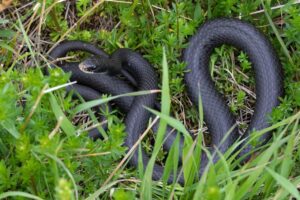
Issue No. 2, 2021 of Massachusetts Wildlife magazine will have a pretty comprehensive article about them. Other topics included in the issue will be hooded mergansers, an endangered species art exhibit, and advice on becoming a hunter on a budget. To subscribe, visit mass.gov/dfw/magazine
That duck is no fool
Last week, I did a piece in this column reminding people not to feed the ducks. Remember Raymour the duck with a messed-up beak and tongue and how Ron Smith had been feeding him by hand? Since then, Paul Dufur of West Housatonic Street, Pittsfield contacted me and said that last year he also had been feeding that duck. The last time he saw him was last February. Dufur lives about a mile from Ron Smith so it appears that Raymour can fly if he wants to.
Ron said that he has not seen that duck since last week’s article came out and that it might have jinxed him. Or, maybe a predator got him.
I prefer to think that Raymour is embarrassed now that he has been exposed as a two-timer, mooching food off of two sympathetic people and is afraid to show his face around here for a while.

